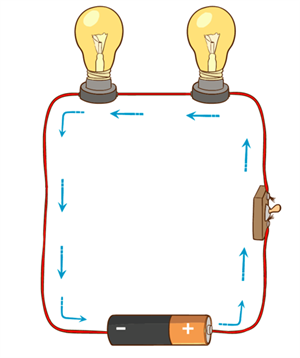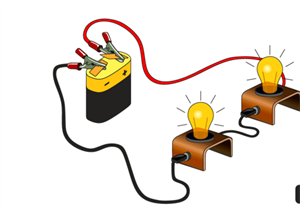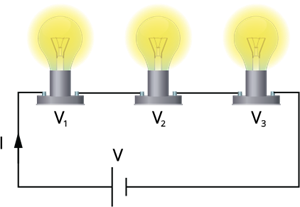
PUMPA - SMART LEARNING
எங்கள் ஆசிரியர்களுடன் 1-ஆன்-1 ஆலோசனை நேரத்தைப் பெறுங்கள். டாப்பர் ஆவதற்கு நாங்கள் பயிற்சி அளிப்போம்
Book Free DemoThere are two ways to connect the electrical equipment in a circuit. They are:
- Series connection
- Parallel connection
Series connection:
A circuit with more than one resistor but a single path through which the electrons can travel is called a series circuit.
From one end of the battery, the electrons move along one path with no branches through the resistors to the other end of the cell. All the elements in a series circuit are connected end-to-end. So, the current through the circuit remains the same throughout the circuit. But, the voltage gets divided across the bulbs in the circuit.

Series circuit
In the above series circuit, two bulbs are used as resistors. In this series circuit, charges from the battery have a single path to travel. Here battery, key, and two bulbs are connected in series, so the charges flow from the battery to each bulb, one at a time, in the order they are wired to the circuit.

Series circuit with bulbs
If one bulb in the circuit is removed, the current flow to another bulb would be interrupted. We put serial lights during festivals. If any one of the lights in a series circuit burns-out, will cause the other lights to switch off. If the number of bulbs in a circuit increases, the light will be dimmer because many resistors act on the battery's single power. We saw that in a series circuit, same current travels through every resistance, and the voltage is different across each resistance.
Let us consider three bulbs connected in series. The current () flows through the circuit and , , be the voltage across each of the bulbs. The supply voltage () is the total of the individual voltage drops across the resistances.

\(3\) bulbs in series
Thus, the net voltage in the series circuit can be found using the formula,